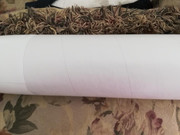Curtis Enlow
Well-Known Member
Thanks, Boatgeek,
Google says 4 hours to Richland via 405/90 (add an hour for WA-2) so that's not too bad, only 15 mins longer than Mansfield. It looks like an awesome place to fly (if the wind doesn't get too crazy) and even if it does it looks like you can see for miles. Do they allow camping at fly-ins?
I'm thinking hard about 29mm reloadables w/adapter. Seems like the way to go in mid-power configuration, and 38/400 case with RAS for L1/L2.
I was wondering about flying 'rogue' at 60 Acres... I don't currently have launch gear, but am good at electronics so a controller and pad should be an easy build. I assume that if you are a Tripoli or NAR member insurance covers you at a site that allows rockets, like 60 Acres?
Thanks so much for the information and advice!
C
From Seattle, Tri-Cities is just as much driving time as Mansfield. I'm not sure how that balances for Arlington since you're a bit closer to Highway 2.
Google says 4 hours to Richland via 405/90 (add an hour for WA-2) so that's not too bad, only 15 mins longer than Mansfield. It looks like an awesome place to fly (if the wind doesn't get too crazy) and even if it does it looks like you can see for miles. Do they allow camping at fly-ins?
I'm thinking hard about 29mm reloadables w/adapter. Seems like the way to go in mid-power configuration, and 38/400 case with RAS for L1/L2.
Another nice thing about 60 Acres is that when it's not soccer season (November-late May/early June), you can come down and fly any time with your own launch gear. I'm there most every Sunday morning with the TARC team I'm mentoring. Also, if you're flying F motors or smaller, the south side of the field is a lot less swampy than the north side in the rainy season.
I was wondering about flying 'rogue' at 60 Acres... I don't currently have launch gear, but am good at electronics so a controller and pad should be an easy build. I assume that if you are a Tripoli or NAR member insurance covers you at a site that allows rockets, like 60 Acres?
Thanks so much for the information and advice!
C





